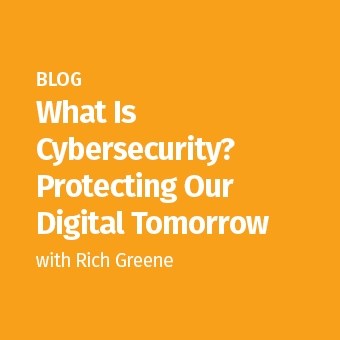If you’re new to cybersecurity, you might feel overwhelmed by all the jargon and technical terms. That’s where our ABCs of Cybersecurity comes in! In this guide, I break down essential concepts in a way that’s easy to understand to give you a solid foundation to build upon. Let’s explore some of the fundamental terms that every beginner should know.
A is for Authentication & Access Control
One of the first things you’ll hear about in cybersecurity is authentication – the process of verifying that someone is who they claim to be. Think of it like showing your ID at the door. Whether it’s a password, fingerprint, or multi-factor authentication (MFA), authentication ensures that only the right people gain access to sensitive systems.
Coupled with authentication is access control. It’s not just about confirming your identity, but also determining what you’re allowed to do. For example, while authentication credentials may let you into a company’s network, access control may restrict which parts of the network you’re allowed to see or edit.
Why it matters: Weak or stolen credentials are the most common way hackers break in. Understanding authentication and access control is crucial to building secure systems.
B is for Backups & Data Security
In cybersecurity we don’t just focus on keeping hackers out; we also need to protect the integrity and availability of our data. That’s where backups come in. Simply put, backups are copies of your important data that you can rely on in case something goes wrong – whether it’s a cyber attack, accidental deletion, or hardware failure. Of course, we can only rely on those backups to save us if we have tested that we can restore them before something goes wrong.
Data security goes beyond just having backups. You need to ensure your data is encrypted (scrambled so unauthorized people can’t read it) and stored securely. That way, even if it’s intercepted, it won’t be usable by cybercriminals.
Why it matters: No system is foolproof, and even the best defenses can fail. Having strong backups and data security practices ensures you can recover quickly after a breach.
C is for Cloud Security & Cyber Hygiene
With so many organizations moving to the cloud, understanding cloud security is essential. Cloud security involves protecting the data, applications, and services you store in the cloud from unauthorized access, attacks, and loss. As a beginner, you’ll want to familiarize yourself with the shared responsibility model, which clarifies what the cloud provider protects and what you need to secure yourself.
Then there’s cyber hygiene – a set of practices and habits that help keep your devices and information secure. It’s like washing your hands in the digital world. Cyber hygiene includes things like keeping your software up to date, using strong passwords, and regularly scanning your systems for vulnerabilities.
Why it matters: Cloud services are powerful but not invulnerable. Ensuring cloud security and practicing good cyber hygiene will help you protect sensitive data and maintain a secure online environment.
How the ABCs of Cybersecurity Can Help You
I created the ABCs of Cybersecurity poster with beginners in mind. If you’re just starting your cybersecurity journey, understanding key concepts like authentication, backups, and cloud security is crucial. This free guide provides a comprehensive look at these and many other essential terms, making it easier for you to dive deeper into the field.
By mastering the basics, you’ll be better prepared to protect systems and data – whether for yourself or for a potential employer. Ready to take the next step? Download the ABCs of Cybersecurity and start your learning journey today!
Ready for More?
Once you’ve learned the ABCs, it’s time to take the next step. My course SEC301 Introduction to Cyber Security™ is designed for beginners who want to build real-world skills and gain the knowledge needed to succeed in cybersecurity. From network defense to threat detection, SEC301™ training covers it all – arming you with the tools you need to protect systems and data effectively.





